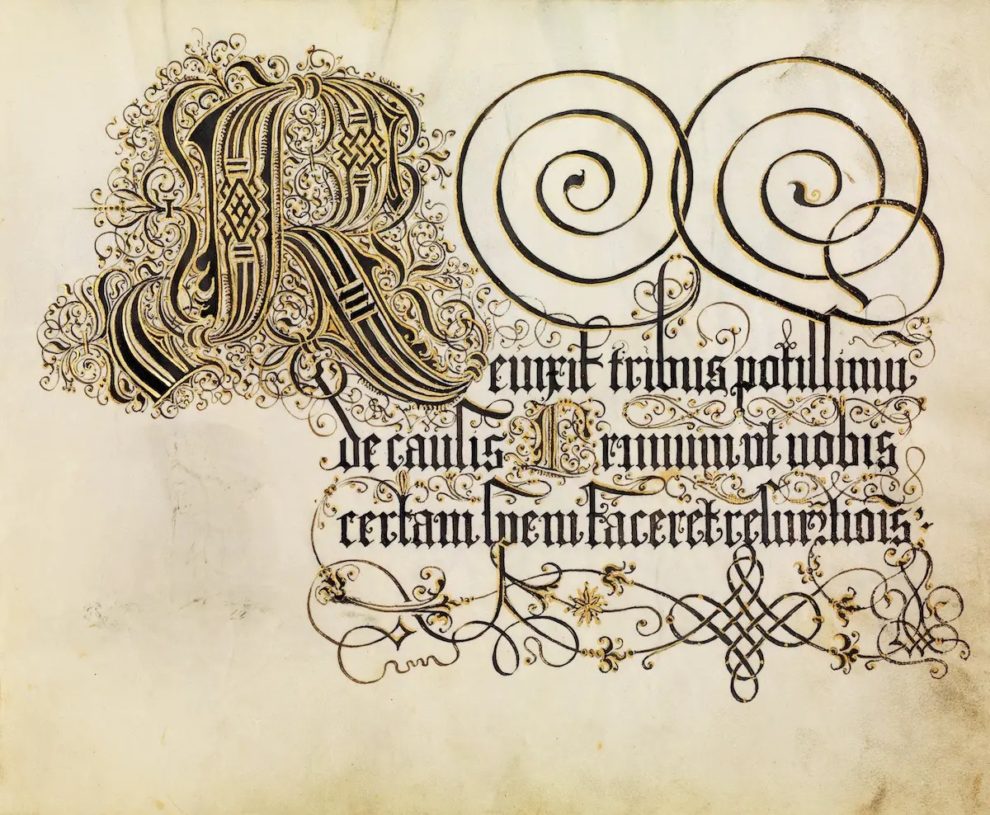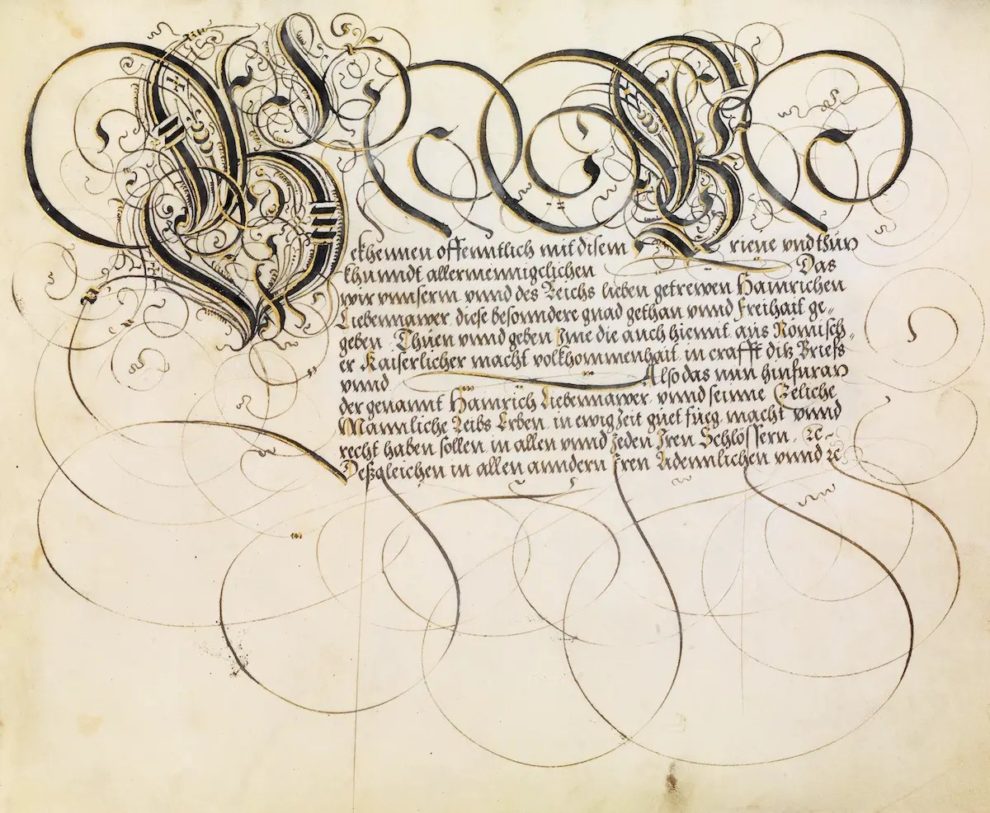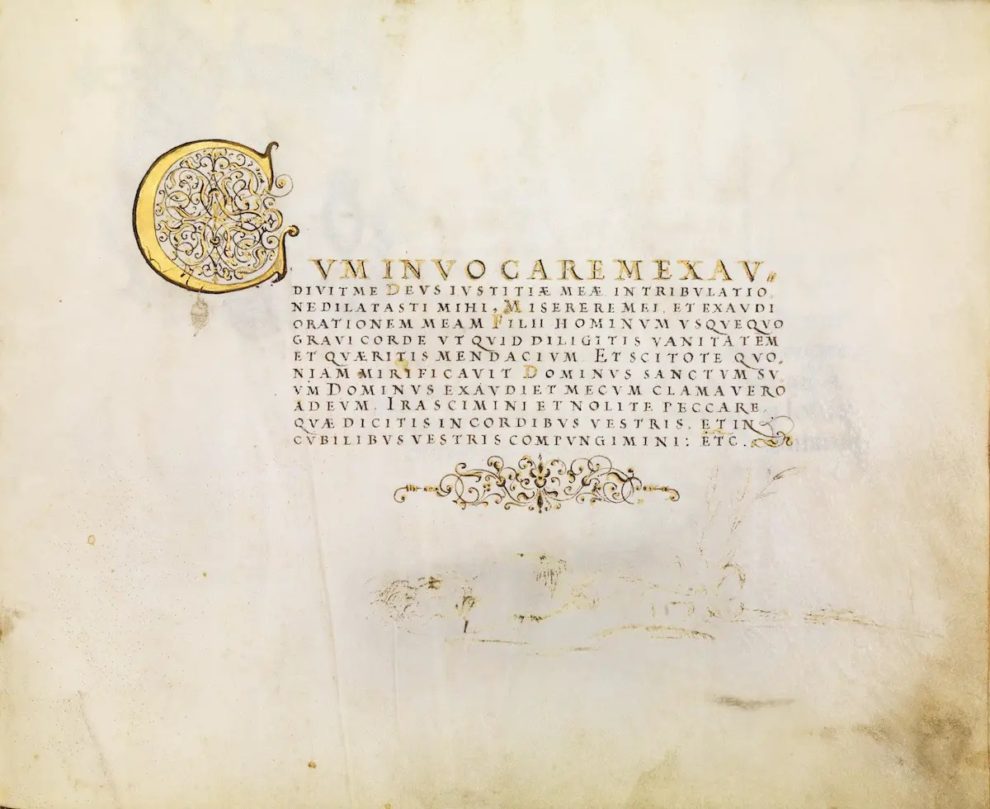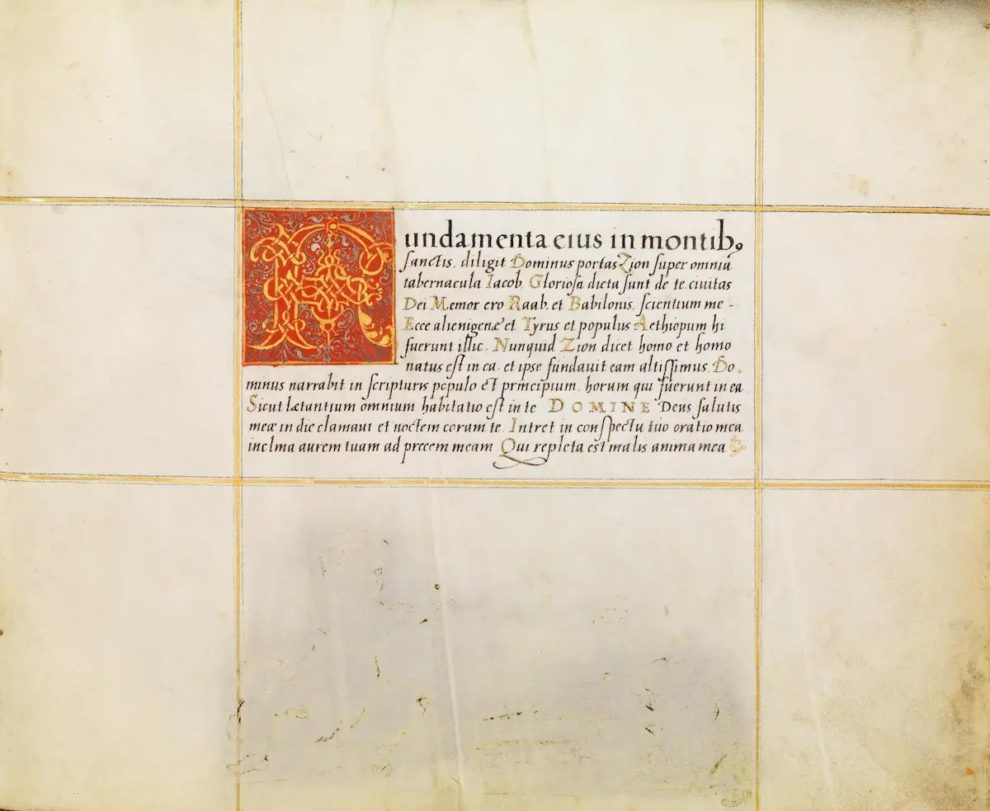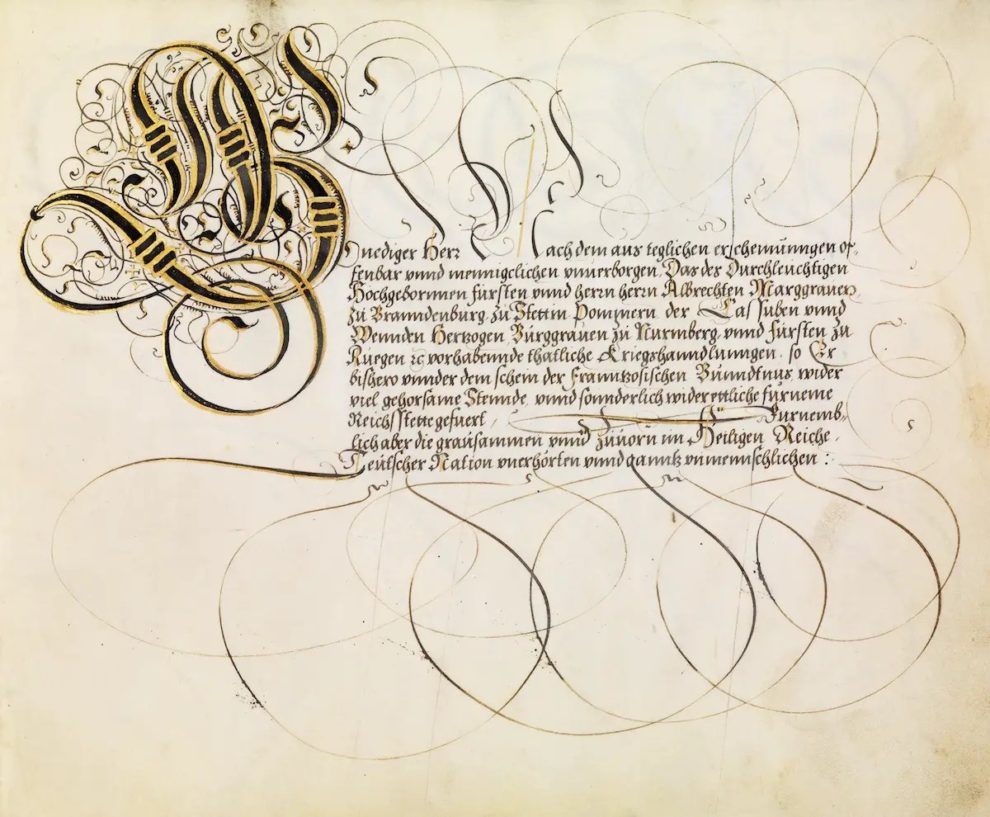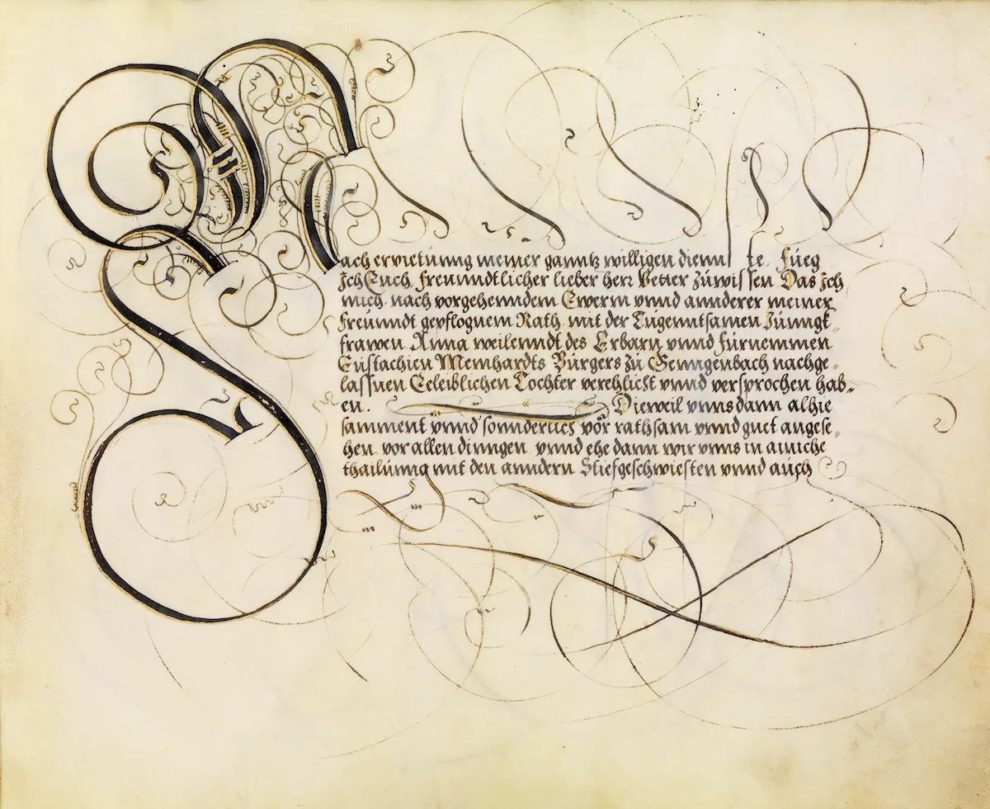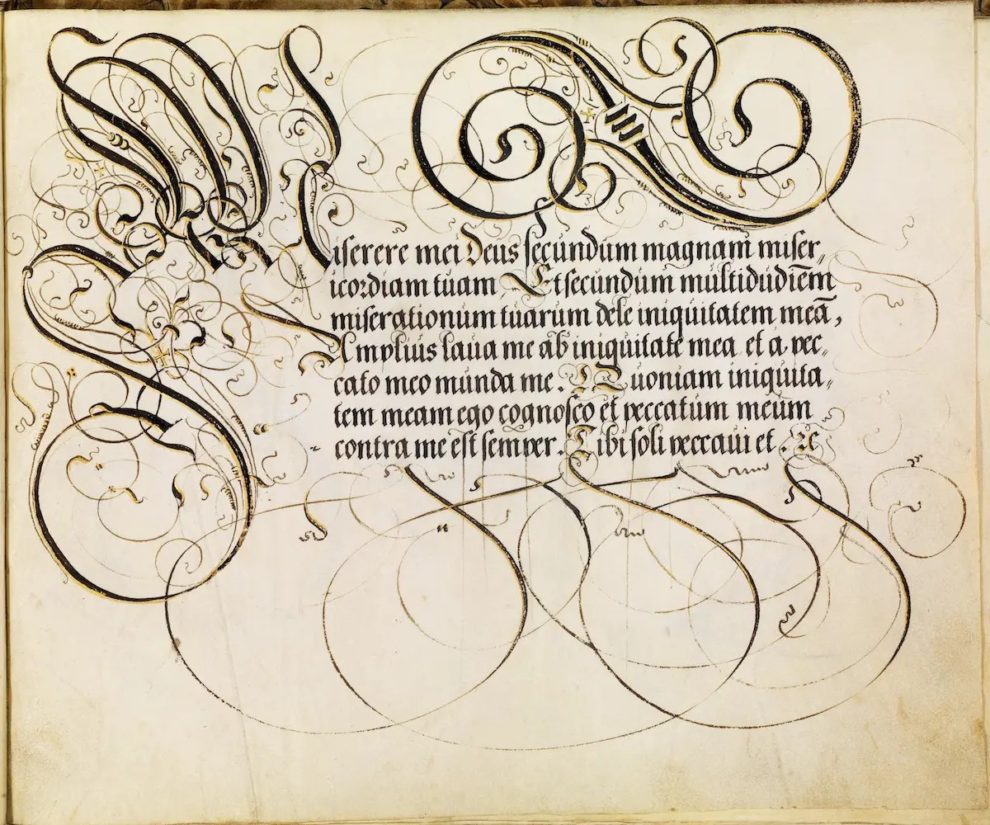Franz Joachim Brechtel’s Musical and Calligraphic Contributions From The 16th Century
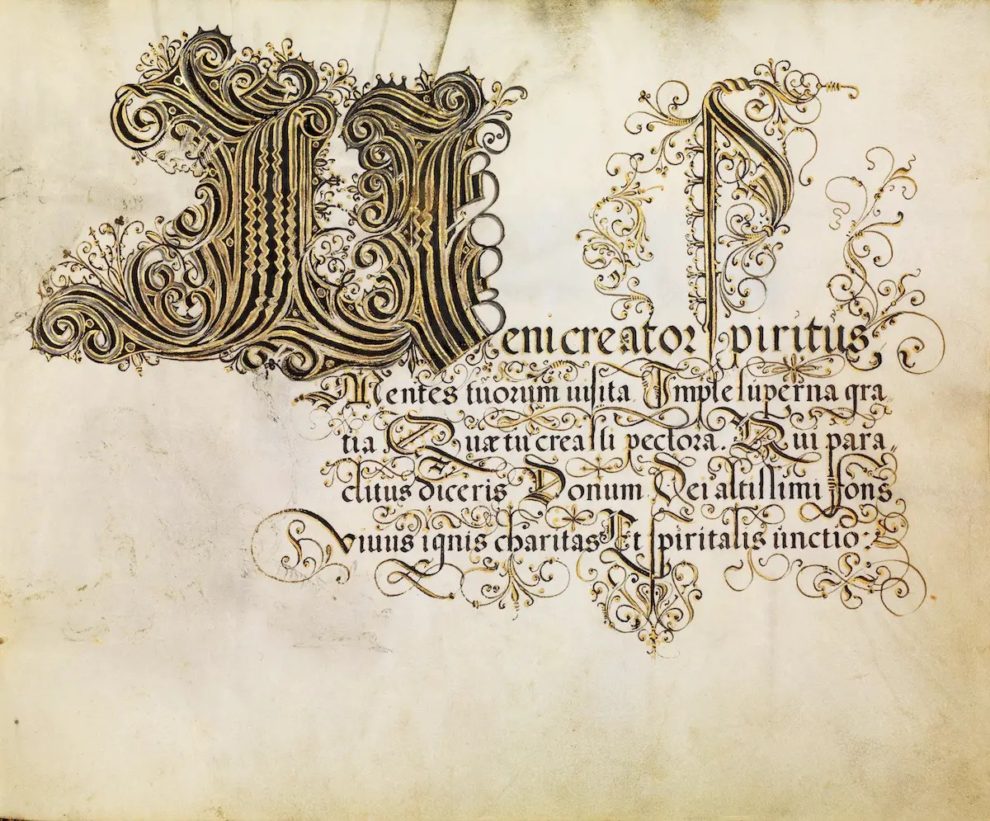
A 24-page manuscript dominates Middle German blackletter scripts with extravagant embellishment, and a minority of the pages contain ‘less’ ornamental writing in Latin. The manuscript appears to be a compilation of calligraphic examples by one of the originators of early fraktur scripts, Johann Neudörffer the Elder (1497-1563), to whom this album is dedicated.
h/t: flashbak
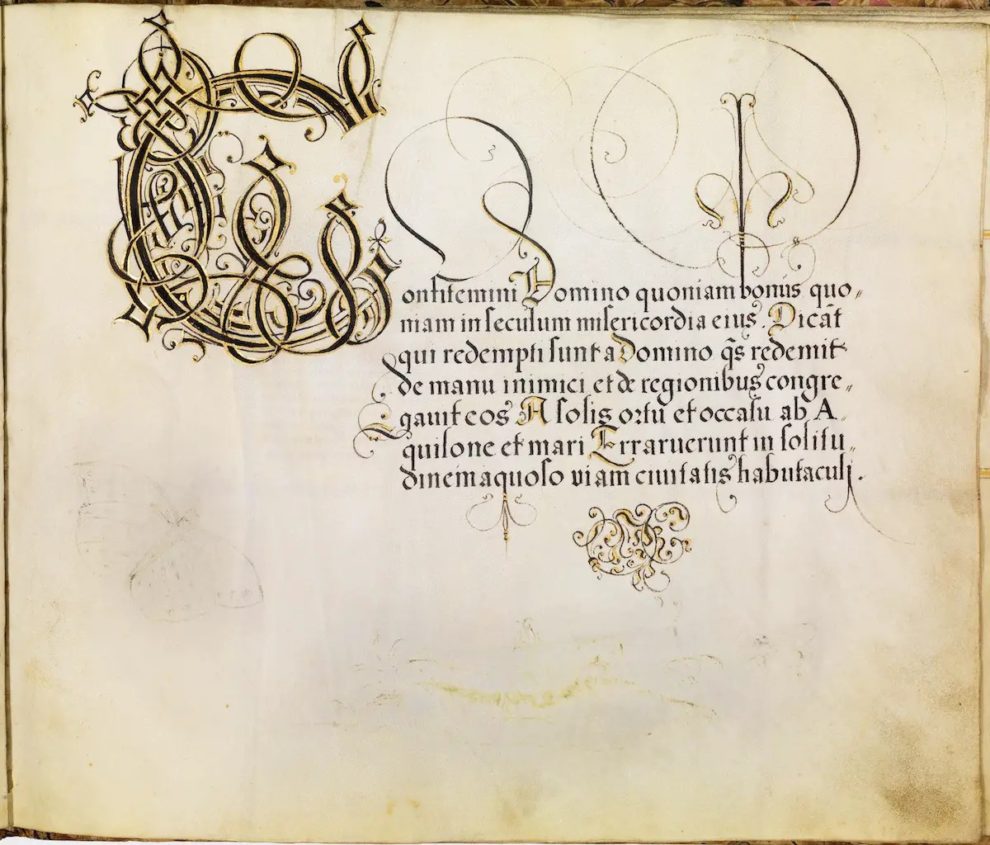
Neudörffer was an important educator who published textbooks in Nuremberg on writing that dominated teaching curriculums for a couple of centuries. His calligraphy endeavors were similarly admired. He is also honored as the first biographical historian of German artists, though his ‘Nachrichten’ (1547) wasn’t published until the 1800s.
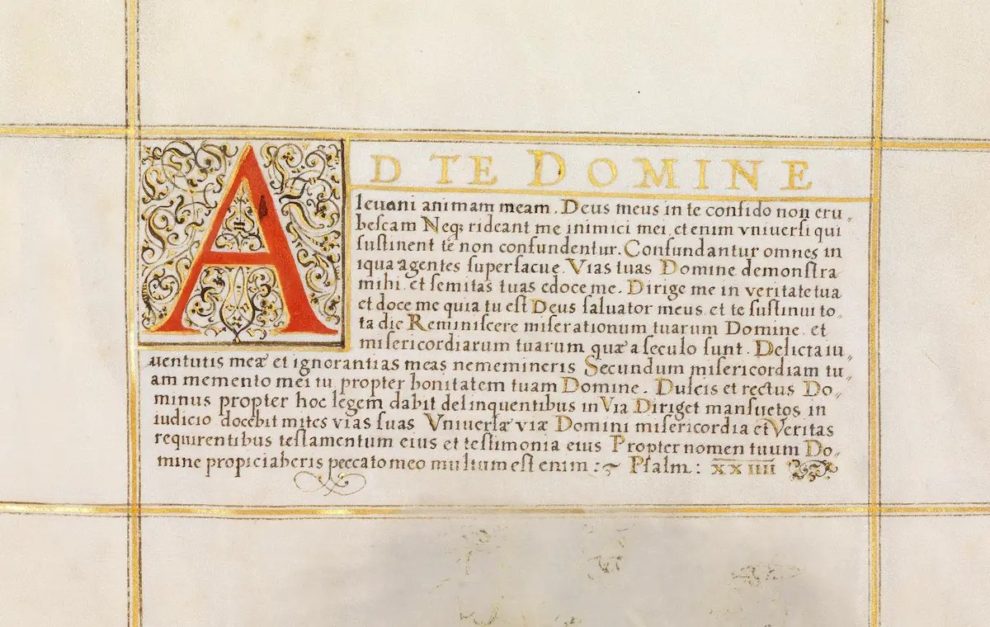
Neudörffer’s lucky association with Albrecht Dürer proved beneficial to his career. He designed the typeface for Dürer’s mathematics book “Underweysung der messung mit dem zirckel und richtscheyt in Linien ebnen unnd gantzen corporen,” published in Nürnberg in 1525.
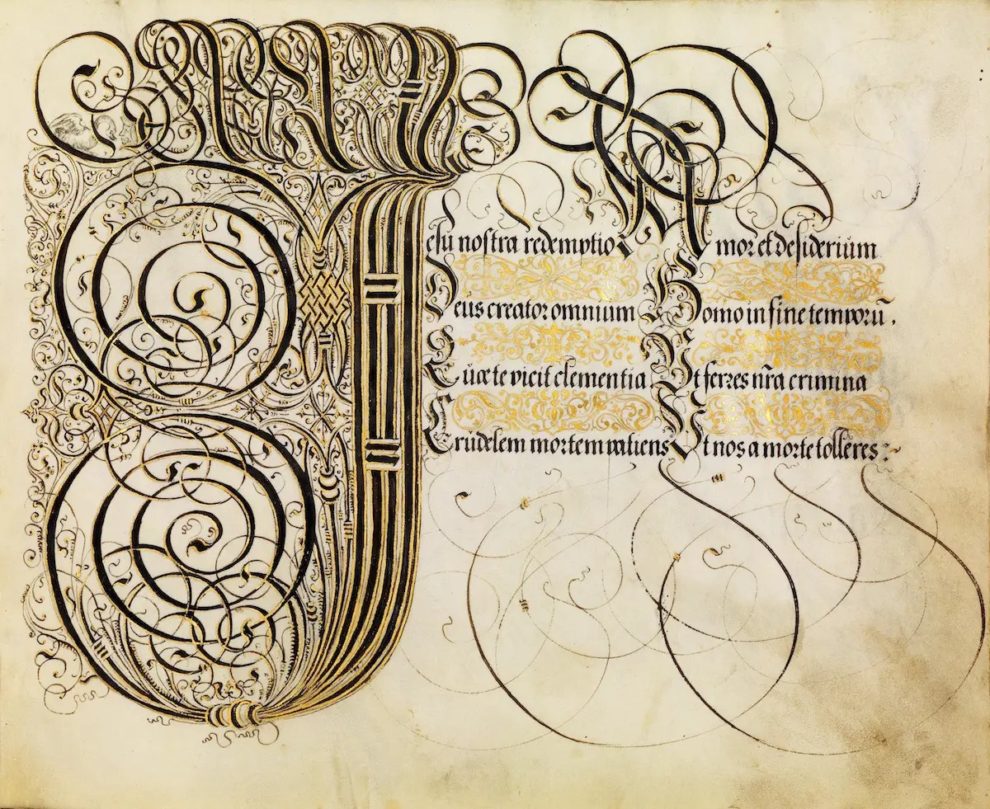
The manuscript’s title, something like “The Works of the Master Scribes,” suggests that Franz Joachim Brechtel assembled a set of Neudörffer’s calligraphy output rather than presenting an adaptation or transformation from the originals. Unfortunately, there is not a lot of information available about Brechtel online. It would appear that his main claim to fame and employment stems from music sheets that he printed. Whether he was the composer or simply the designer/publisher of the sheet music is unclear, but his name is associated today with more than a hundred pieces of music that can be found on the internet.
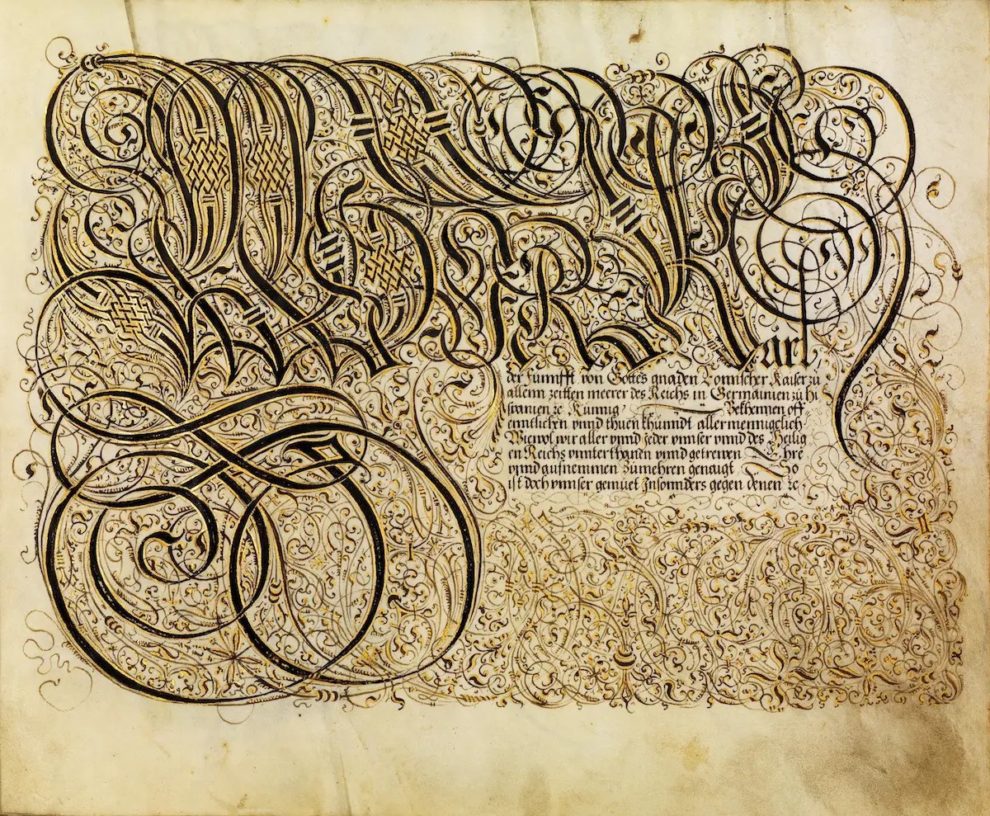
The Fraktur, from Latin fractura “break”, since the mid-15th century also “broken writing,” is a font. From the middle of the 16th to the beginning of the 20th century, it was the most widely used typeface in the German-speaking world, as well as, in competition with Antiqua, also in northern European countries.
